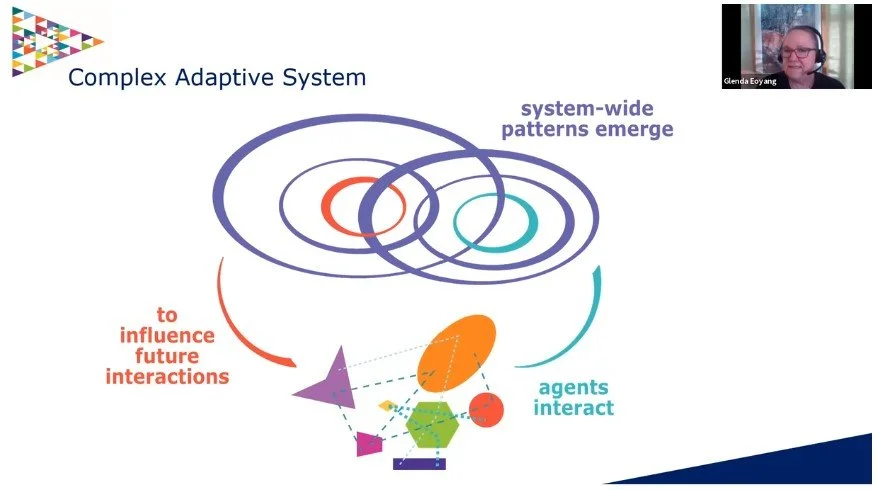
HSD & Complexity Sciences
What Are Complexity Sciences?
Complexity sciences refer to a large collection of theories and concepts that explain complex behaviours. The research comes from a wide range of disciplines, such as mathematics, physics, psychology, biology, ecology, brain science, traffic & urban systems management, and more.
This is complexity in action.
Complex Adaptive Systems
Complex behaviours emerge from complex adaptive systems. A complex adaptive system consists of a group of agents that interact with one another in ways that produce system-wide patterns.
For example, within an organisation, individuals interact with each other in teams and across teams. In doing so, they produce not only goods and services, but also other effects such as values, norms, culture, harmony and conflict.
Complex adaptive systems are all around us - families, schools, workplaces, marketplaces, communities and others.
Watch a video introduction by Dr. Glenda Eoyang
HSD has learned and benefited from many other complexity sciences, adapting and simplifying models and methods for practical and everyday use.
Human Systems Dynamics distilled three key conditions that affect the characteristics of complex adaptive systems - the CDE Model.
CDE Model of Complex Adaptive Systems
-

Container - C
Complex systems have more open boundaries. This means the system is affected by inputs and influences from the external environment. In fact, there may be multiple boundaries that overlap with one another.
Example: This is why some people find it hard to separate their work and family lives. It is also why it can be difficult to coordinate work across multiple teams.
-

Differences - D
Complex systems have more differences that agents can engage and act upon.
Example: This is why it is hard to agree on what an “ideal” leader or worker should be, because there are many possible traits we may desire or expect in such a person. It is also why it is hard to please everyone in a system.
-

Exchanges - E
Complex systems have more exchanges and relationships that are nonlinear.
A linear relationship has a clear cause-and-effect, e.g. ‘X’ affects ‘Y’ which then affects ‘Z’. In a nonlinear relationship, ‘X’, ‘Y’, ‘Z’ can all affect one another, which can make it hard to identify cause-and-effect and predict the resulting patterns of behaviour.
Example: This is why conflicts can be tricky to manage, especially if each side takes retaliatory actions that further escalate the conflict.



